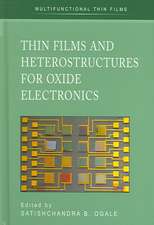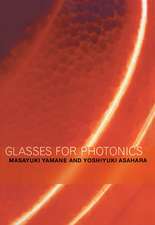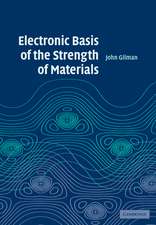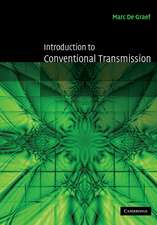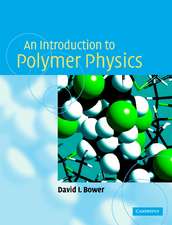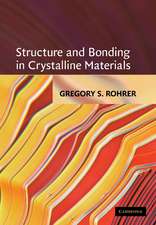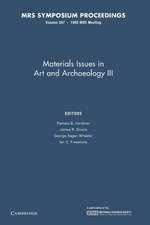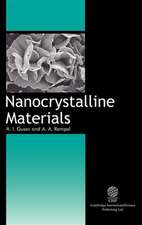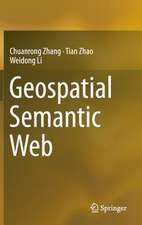Materials Issues in Art and Archaeology X: Volume 1656: MRS Proceedings
Editat de Pamela B. Vandiver, Weidong Li, Philippe Sciau, Christopher Mainesen Limba Engleză Hardback – 8 iul 2020
Din seria MRS Proceedings
- 11%
 Preț: 681.78 lei
Preț: 681.78 lei - 14%
 Preț: 700.71 lei
Preț: 700.71 lei - 14%
 Preț: 697.86 lei
Preț: 697.86 lei - 11%
 Preț: 686.07 lei
Preț: 686.07 lei - 14%
 Preț: 703.63 lei
Preț: 703.63 lei -
 Preț: 279.67 lei
Preț: 279.67 lei - 11%
 Preț: 684.01 lei
Preț: 684.01 lei - 11%
 Preț: 683.51 lei
Preț: 683.51 lei - 14%
 Preț: 770.83 lei
Preț: 770.83 lei - 14%
 Preț: 704.43 lei
Preț: 704.43 lei -
 Preț: 274.88 lei
Preț: 274.88 lei - 14%
 Preț: 698.71 lei
Preț: 698.71 lei - 11%
 Preț: 573.07 lei
Preț: 573.07 lei - 14%
 Preț: 712.89 lei
Preț: 712.89 lei - 11%
 Preț: 683.51 lei
Preț: 683.51 lei - 14%
 Preț: 702.36 lei
Preț: 702.36 lei -
 Preț: 225.17 lei
Preț: 225.17 lei -
 Preț: 278.72 lei
Preț: 278.72 lei -
 Preț: 280.48 lei
Preț: 280.48 lei - 14%
 Preț: 701.53 lei
Preț: 701.53 lei -
 Preț: 247.28 lei
Preț: 247.28 lei - 11%
 Preț: 689.47 lei
Preț: 689.47 lei - 14%
 Preț: 713.27 lei
Preț: 713.27 lei -
 Preț: 270.25 lei
Preț: 270.25 lei -
 Preț: 262.30 lei
Preț: 262.30 lei - 11%
 Preț: 592.46 lei
Preț: 592.46 lei -
 Preț: 272.97 lei
Preț: 272.97 lei -
 Preț: 270.07 lei
Preț: 270.07 lei - 11%
 Preț: 685.21 lei
Preț: 685.21 lei - 11%
 Preț: 686.91 lei
Preț: 686.91 lei - 11%
 Preț: 566.73 lei
Preț: 566.73 lei -
 Preț: 268.97 lei
Preț: 268.97 lei - 11%
 Preț: 683.51 lei
Preț: 683.51 lei - 14%
 Preț: 737.64 lei
Preț: 737.64 lei - 11%
 Preț: 676.17 lei
Preț: 676.17 lei -
 Preț: 213.63 lei
Preț: 213.63 lei - 11%
 Preț: 684.35 lei
Preț: 684.35 lei -
 Preț: 275.85 lei
Preț: 275.85 lei - 11%
 Preț: 685.55 lei
Preț: 685.55 lei - 11%
 Preț: 682.65 lei
Preț: 682.65 lei - 11%
 Preț: 681.78 lei
Preț: 681.78 lei - 14%
 Preț: 700.71 lei
Preț: 700.71 lei - 14%
 Preț: 705.16 lei
Preț: 705.16 lei -
 Preț: 234.81 lei
Preț: 234.81 lei - 11%
 Preț: 685.21 lei
Preț: 685.21 lei -
 Preț: 233.82 lei
Preț: 233.82 lei -
 Preț: 442.05 lei
Preț: 442.05 lei - 14%
 Preț: 713.13 lei
Preț: 713.13 lei - 14%
 Preț: 703.02 lei
Preț: 703.02 lei -
 Preț: 233.63 lei
Preț: 233.63 lei
Preț: 600.93 lei
Preț vechi: 675.20 lei
-11% Nou
Puncte Express: 901
Preț estimativ în valută:
114.99€ • 122.96$ • 95.87£
114.99€ • 122.96$ • 95.87£
Carte tipărită la comandă
Livrare economică 17 aprilie-01 mai
Preluare comenzi: 021 569.72.76
Specificații
ISBN-13: 9781605116334
ISBN-10: 1605116335
Pagini: 408
Dimensiuni: 155 x 234 x 35 mm
Greutate: 0.71 kg
Editura: Cambridge University Press
Colecția Cambridge University Press
Seria MRS Proceedings
Locul publicării:New York, United States
ISBN-10: 1605116335
Pagini: 408
Dimensiuni: 155 x 234 x 35 mm
Greutate: 0.71 kg
Editura: Cambridge University Press
Colecția Cambridge University Press
Seria MRS Proceedings
Locul publicării:New York, United States
Cuprins
Preface; Materials Research Society Symposium Proceedings; Part I. The Conservation Science of Stone Consolidation, Site Material Condition and a New Pollution Source in the Museum Environment: 1. Nucleation, growth and evolution of hydroxyapatite films on calcite; 2. Novel hydroxyapatite-based consolidant and the acceleration of hydrolysis of silicate-based consolidants; 3. Properties and characterization of building materials from the Laosicheng Ruins in Southern China; 4. Dispersions of surface modified calcium hydroxide nanoparticles with enhanced kinetic stability: properties and applications to desalination and consolidation of the Yungang Grottoes; 5. Unraveling the core of the Gran Piramide from Cholula, Puebla: a compositional and microstructural analysis of the adobe; 6. Environmental monitoring of volatile organic compounds using silica gel, zeolite and activated charcoal; Part II. The Narrative Interpretation of Process Reconstruction and Materials Characterization in Technical Art History and Archaeological Science: 7. Study of Mexican colonial mural paintings: an in-situ non-invasive approach; 8. Investigating a moche cast copper artifact for its manufacturing technology; 9. Hawaiian barkcloth from the Bishop Museum collections: a characterization of materials and techniques in collaboration with modern practitioners to effect preservation of a traditional cultural practice; 10. Technology of Egyptian core glass vessels; Part III. Technical Art History: Pigment Identification, Reactivity and Transformation: 11. Characterization of bistre pigment samples by FTIR, SERS, Py-GC/MS and XRF; 12. Analysis of lead carboxylates and lead-containing pigments in oil paintings by solid-state nuclear magnetic resonance; 13. Fine pore structure characterization in two gessoes using focused ion bean scanning; 14. Effects of humidity on gessoes for easel paintings; Part IV. Alteration, Technology and Interpretation of Archaeological Ceramics, Glazes and Glasses: 15. Role of weathering layers on the alteration kinetics of medieval stained glass in an atmospheric medium; 16. Study of cloisonné enamel glaze of decorative components from Fuwangge in the Forbidden City by means of LA-ICP-MS and micro-raman spectroscopy; 17. Technological behavior in the southwest: Pueblo I lead glaze paints from the Upper San Juan region; 18. Analysis and replication of Jianyang tea bowls from Song Dynasty China; 19. The technological development of decorated Corinthian pottery, 8th to 6th centuries BCE; 20. Ceramics at the emergence of the Silk Road: a case of village potters from southeastern Kazakhstan during the late Iron Age; 21. Ceramics at the emergence of the Silk Road: a case from southeastern Kazakhstan: retraction; Part V. Characterization of Metal and Stone Characterization, and Metal Nanoparticle Corrosion: 22. Benefits of the complementary use of archaeometry investigations and historical research in the study of ancient airplanes: the Breguet Sahara's rivets; 23. Non-invasive characterization of stone artifacts from the Great Temple of Tenochtitlan, Mexico; 24. Multiscale characterization of limestone used on monuments of cultural heritage; 25. Characterization of a surface tarnish found on daguerreotypes revealed under shortwave ultraviolet radiation; Part VI. Method Development in Image Processing, Analysis and Proof of Concept: 26. Quantitative porosity studies of archaeological ceramics by petrographic image analysis; 27. Dual-beam scanning electron microscope (SEM) and focused ion beam (FIB): a practical method for characterization of small cultural heritage objects; 28. The potential of low frequency EPR spectroscopy in studying pottery artifacts and pigments.
Descriere
Presents innovative multidisciplinary work on the characterization of ancient materials.

